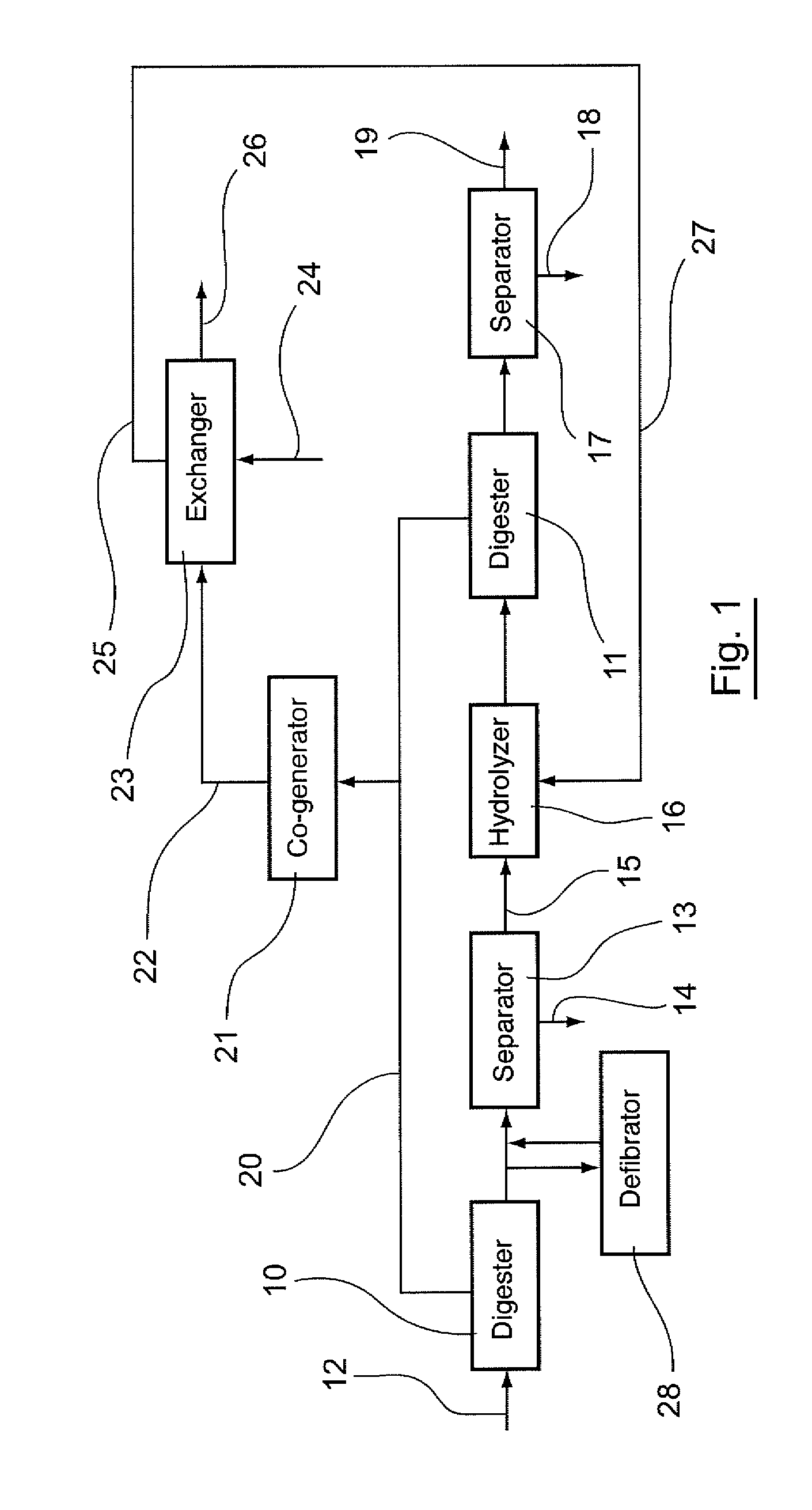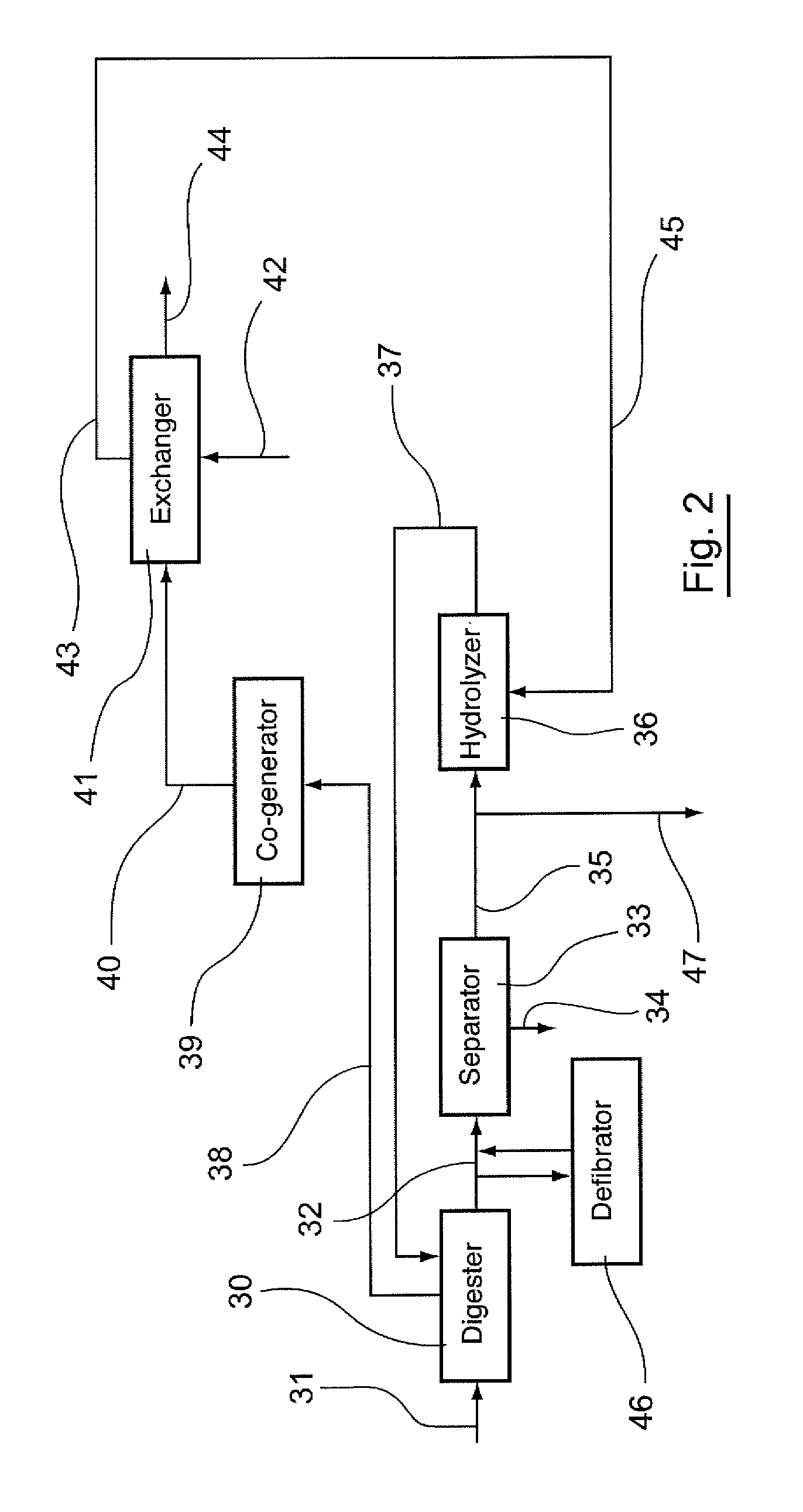Method for Producing Non-Putrescible Sludge and Energy and Corresponding Plant
- Summary
- Abstract
- Description
- Claims
- Application Information
AI Technical Summary
Benefits of technology
Problems solved by technology
Method used
Image
Examples
first embodiment
7.4. Example of a Process According to the Invention
[0142]Referring to FIG. 1, a first embodiment is presented of a process for treating sludges according to the invention.
[0143]In this process, sludges to be treated are conveyed in a primary digester 10 so that they undergo a step of primary digestion. In this embodiment, the duration of this digestion is about 10 days. In alternative embodiments, it could range from 5 to 15 days.
[0144]During this digestion, there is:[0145]a reduction of the fermentable fraction of the sludges and therefore a reduction of the dry matter to be treated;[0146]a biological hydrolysis of a part of the non-fermentable minerals (such as nitrogen and phosphorous);[0147]an elimination of a large quantity of sugars contained in the sludges (this aspect can clearly be seen in FIGS. 3 and 4 which illustrate the sugar content of the sludges respectively before and after the implementation of the first digestion);[0148]the generation of low bio-degradable or non...
second embodiment
7.5. Example of the Process According to the Invention
[0182]Referring to FIG. 2, a second embodiment of a sludge-treatment process according to the invention is presented.
[0183]In this process, sludges to be treated are conveyed into a digester 30 so that they undergo a step of primary digestion for about 10 days. In alternative embodiments, the step could range from 5 to 15 days.
[0184]During this primary digestion, there is:[0185]a reduction of the fermentable fraction of the sludges and therefore a reduction of the dry matter to be treated;[0186]a biological hydrolysis of a part of the non-fermentable minerals (such as nitrogen and phosphorous);[0187]an elimination of a large quantity of sugars contained in the sludges;[0188]the generation of low bio-degradable or non-biodegradable soluble organic matter such as high COD matter and refractory nitrogen;[0189]the solubilization of volatile fatty acids.
[0190]At the end of this digestion process, the fermentable fraction of the sludge...
PUM
 Login to View More
Login to View More Abstract
Description
Claims
Application Information
 Login to View More
Login to View More - R&D
- Intellectual Property
- Life Sciences
- Materials
- Tech Scout
- Unparalleled Data Quality
- Higher Quality Content
- 60% Fewer Hallucinations
Browse by: Latest US Patents, China's latest patents, Technical Efficacy Thesaurus, Application Domain, Technology Topic, Popular Technical Reports.
© 2025 PatSnap. All rights reserved.Legal|Privacy policy|Modern Slavery Act Transparency Statement|Sitemap|About US| Contact US: help@patsnap.com



